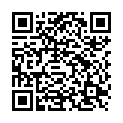|
|
|
| Module code: WiMb21NT111 |
|
|
- |
|
6 |
| Semester: according to optional course list |
| Mandatory course: no |
Language of instruction:
German |
Assessment:
[updated 22.05.2023]
|
|
The total student study time for this course is 150 hours.
|
Recommended prerequisites (modules):
None.
|
Recommended as prerequisite for:
|
Module coordinator:
Prof. Dr.-Ing. Jan Christoph Gaukler |
Lecturer: Prof. Dr.-Ing. Jan Christoph Gaukler
[updated 29.03.2023]
|
Learning outcomes:
After successfully completing this module, students will understand the basics of the structure and properties of metals with regard to their weldability. They will be able to explain the way in which joining production processes (fusion and pressure welding processes, adhesive bonding) work and what they can be used for. They will be able to select appropriate processes and identify and define their key manufacturing parameters to achieve the desired product properties.
This knowledge will enable them to evaluate the technical and economic suitability of metals and joining processes for the manufacture of established, as well as new products. Furthermore, they will be able to identify and solve technical joining problems that could for example, lead to undesirable product properties.
[updated 22.05.2023]
|
Module content:
Soldering: Fusion and pressure welding processes, weldability of metals and as a superordinate component property
Bonding: Basic principles, adhesive-friendly design, surface treatment of joined parts, adhesive classes
[updated 22.05.2023]
|
Teaching methods/Media:
Lecture, exercises, discussions
Documents, exercises, text books und scientific literature
[updated 22.05.2023]
|
Recommended or required reading:
W. Bergmann: Werkstofftechnik 1 und 2 (Carl Haser Verlag)
A. H. Fritz: Fertigungstechnik, Springer Vieweg
G. Habenicht: Kleben – Grundlagen, Technologien und An-wendungen, Springer
[updated 22.05.2023]
|

